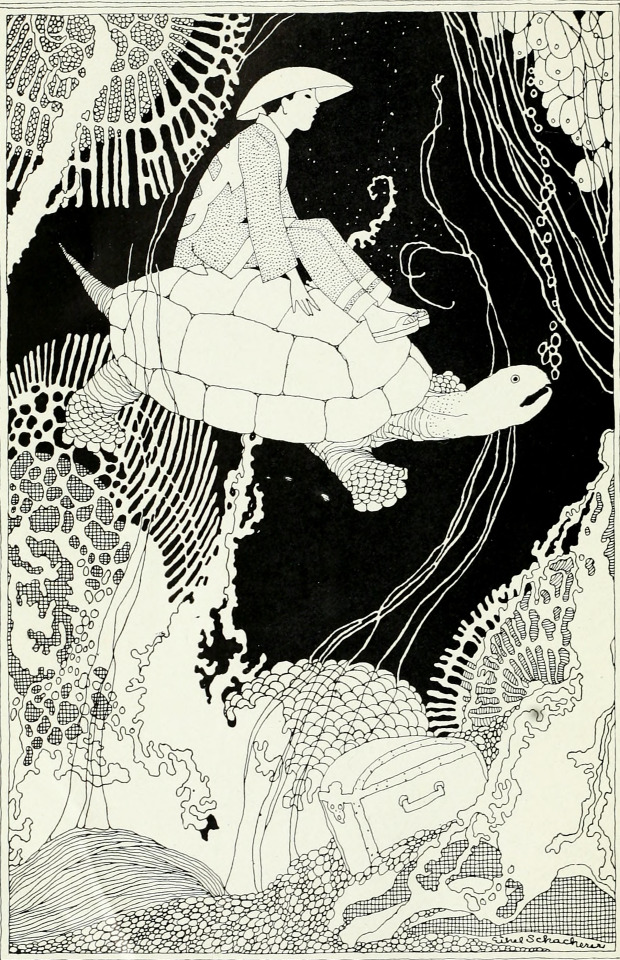Don't wanna be here? Send us removal request.
Text

Livre de la Vigne nostre Seigneur; France, 15th century; Bodleian Library, MS. Douce 134, f. 49v
14K notes
·
View notes
Text

Bilder zum Anschauungs-Unterricht für die Jugend - 1839 - via Staatsbibliothek Berlin
644 notes
·
View notes
Text

Several grasshopper species from Transactions of the Entomological Society of London v.77 (1929).
Full text here.
301 notes
·
View notes
Text

Zero Gravity Indicators: Plushies in Space!
What are zero gravity indicators?
Did you know that some astronauts bring stuffed animals with them on their journeys to space? A zero gravity indicator (ZGI) is a plushie that is brought aboard spacecraft to demonstrate when the astronauts have reached the weightlessness of space. Even though the astronauts are strapped in their seats, the plushie will float — and viewers of the livestream will know they’ve reached space! Read on to learn about some of the plushies astronauts have taken with them to space.
Giraffiti

NASA astronaut and Artemis II commander Reid Wiseman brought a very special ZGI to the International Space Station: a toy giraffe named Giraffiti. Wiseman’s mother gifted Giraffiti to his oldest daughter when she was born. When Wiseman embarked on his first mission to space, his kids gave him Giraffiti to take with him to space.
Dinosaur

NASA astronaut Karen Nyberg made a stuffed dinosaur toy by sewing together scraps of food-packaging liners and a T-shirt. Although this dinosaur toy was not an official zero gravity indicator that didn’t stop it from floating around the International Space Station and being very cute for the cameras!
8-Ball

NASA astronaut and Artemis II mission specialist Christina Koch brought a plush 8-ball toy with her during her stay aboard the International Space Station in 2019. The toy represented the Astronaut Class of 2013, which was affectionately called the “8-balls” because of its eight members. Both NASA astronauts Nick Hague and Jessica Meir, pictured here, were members of this class.
Crane
NASA's SpaceX Crew-10 mission astronauts chose a plush origami crane as their zero gravity indicator because they are all pilots and grew up building paper airplanes. The crane is also a symbol of peace.
Cheburashka and Chimpo
youtube
English captions are available for the video.
When NASA astronaut Frank Rubio flew to the International Space Station in 2022, his cosmonaut crewmates brought aboard a stuffed animal named Cheburashka. Rubio also carried a small stuffed animal in his pocket named Chimpo. Chimpo was a stuffed animal that Rubio’s children had for almost 20 years before giving it to Rubio for him to bring aboard his flight.
Snoopy

Snoopy hitched a ride around the Moon aboard the Orion spacecraft during the Artemis I mission in 2022. Although this mission didn’t have astronauts, Snoopy was joined by a manikin named Moonikin Campos who was used to measure vibrations inside the capsule. NASA has shared an association with Snoopy since the Apollo era, when Charles M. Schulz Schulz created comic strips of Snoopy on the Moon, capturing public excitement about America’s achievements in space.
What would you take with you to space?
Now it’s your turn! People of all ages from all over the world have the opportunity to design the zero gravity indicator for the Artemis II mission around the Moon. Should the astronauts’ plush companion have wings? Scales? What would you like to see floating around the Orion spacecraft? Check out the Moon Mascot challenge to learn more! Submissions are due June 16, 2025.
3K notes
·
View notes
Text

'La Nuit Venitienne, Fantasio Les Caprices de Marianne' illustrated by Umberto Brunelleschi, 1913
1K notes
·
View notes
Text

Bilder zum Anschauungs-Unterricht für die Jugend - 1839 - via Staatsbibliothek Berlin
644 notes
·
View notes
Text

Gustave Moreau – Study of Salome for "Salome Dancing before Herod"
6K notes
·
View notes
Text

"Down through the water the tortoise dived." Berle's self culture. v.2. 1926.
Internet Archive
From a book uploaded by Tracey.Gutierres
1K notes
·
View notes
Text

'The Shadow of a Colombine' by Josef Diveky from Satirical Magazine 'Nebelspalter', 1923.
2K notes
·
View notes
Text

'Fairies and Bumble Bee' by Hilda T. Miller, (1876 - 1939)
2K notes
·
View notes
Text

'Her Majesty led this strange orchestra' by Rosina Emmet Sherwood, 1888.
6K notes
·
View notes
Text

Floor mosaic in marble of the Ravenna Cathedral, Italy. Arabische und alt-italienische Bau-Verzierungen. 1842.
Internet Archive
668 notes
·
View notes
Text

Bird drawings by Patten Wilson. Dekorative Vorbilder 14. 1904.
Internet Archive
From a book uploaded by dvsmethid
1K notes
·
View notes
Text

Henri Rousseau “The Equatorial Jungle” 1909
Henri Julien Félix Rousseau (21 May 1844 – 2 September 1910) was a French post-impressionist painter in the Naïve or Primitive manner.
He was also known as Le Douanier (the customs officer), a humorous description of his occupation as a toll and tax collector.
He started painting seriously in his early forties; by age 49, he retired from his job to work on his art full-time. A true testament that it is never too late to do what you love and are good at.
Rousseau claimed he had “no teacher other than nature”, and his best-known paintings depict jungle scenes, even though he never left France or saw a jungle.
118 notes
·
View notes


